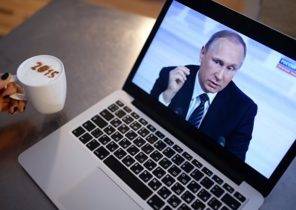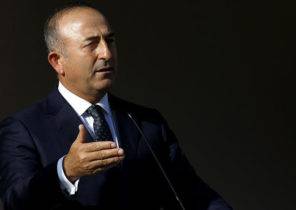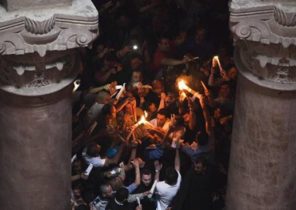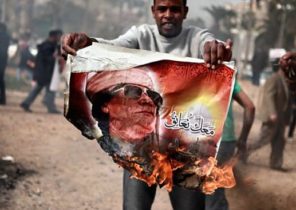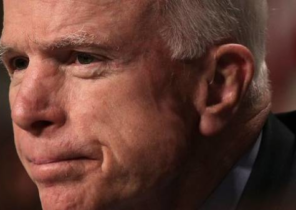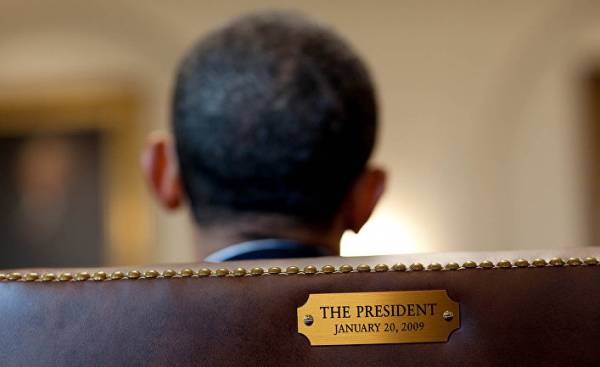
Over the weekend, the Washington Post published a new article, which tells about the attempts of the Obama administration to respond to the clandestine activities of Russia during the elections of 2016. In addition, the article provides new details about the intelligence received and internal debates administration towards response.
One interesting discovery was that the White house is not just to symbolically punish Russia by sending “diplomatic” personnel. He also repaid the Kremlin in the same coin, after the return secret cyberoperations.
At first glance secret and controversial action seems sudden and meaningless deterrent. As was the case when President trump used the “mother of all bombs” in Afghanistan, the United States (in accordance with its usual practice) make a loud and clear warning. Although the details of cyber operations undertaken by Obama are still classified, according to the publication of The Washington Post, it was designed so that Moscow found her. In addition, she had to demonstrate the ability of Washington to cause significant damage in the event of an increase in scale of Russia’s intervention. Thus, it is possible that, causing this secret retaliation, the White house was able to threaten his opponent, without making a public spectacle, and it would not lead to negative consequences domestically and internationally.
Russia’s actions and response steps the United States is not the first case of the use of secret interventions in the process of the confrontation that arises in world politics. The authors of the new study explain why leaders sometimes prefer hidden coercion and why such actions are sometimes effective.
Compulsion means submission of the enemy to his will
Coercion means any attempt to change the decision-making process of another state through the threat of future consequences. To such actions to be effective, requires two main components:
1. Clarity
The threat of future consequences should be expressed in such a way that the opponent, it was clear that you are trying to influence. This is especially important if the government forces not with the public verbal statements in the style “do this or else…” and through physical force.
2. Credibility
Anyone can bluff. But, as emphasized by Thomas Schelling (Thomas Schelling), to achieve success it is necessary to present a plausible, credible plan of action that will “run” only if the opponent does not do what is required of him.
The leaders of a large set of means of coercion. As a rule, the coercion takes the form of a highly visible and symbolic military maneuvers — such as periodic redeployment of the Seventh fleet of the US Navy in East Asia. If we talk about ground maneuvers, military mobilization on the eve of the First world war was evidence of the determination of Russia and Germany, but also contributed to the escalation. According to The Washington Post, Obama’s aides drew up a list of possible measures, mainly involving punishment by exposure in cyberspace, economic and diplomatic sanctions.
The choice is externally visible and attracting the attention of coercive measures can provide an advantage in terms of credibility. As originally argued Schelling, if the saber-rattling in the eyes of the General public, then it will be much harder to stop using it. Leaders who make threats and then not implement them, unable to pay for it “public support”, that is, to lose the support of the population. Knowing this, the enemy probably initially more inclined to believe the threats. Although theorists-specialists in international relations have questioned the value of “price support of the population”, the fact remains that most of the measures taken for enforcement is “clearly visible”, “verbal” and military threats.
The art of covert coercion
The art of secret, behind-the-scenes coercion is less clear. Made alone a verbal warning is one of the options of warning, which Obama apparently used against the Russian President Vladimir Putin last fall. These methods of prevention, which are often not taken seriously and are considered “empty words” in the opinion of the author of a recently published scientific article may have diplomatic meaning, especially when spoken during the leaders meetings one-on-one.
In order to convey to the adversary required the idea, governments may also resort to hidden or invisible war. During the Korean war, the Eisenhower administration transferred the bombers used to deliver atomic bombs, in order to push the Soviet Union to the peaceful settlement of the conflict. Eisenhower in the late 1950-ies also used the secret military preparations that are significant only to the Soviet Union to demonstrate its resolve in Berlin.
During the Vietnam war, the Nixon administration similarly manipulated by US aircraft, to simulate the state of preparedness for the nuclear strike, hoping to force Moscow and North Vietnam to sign a peace agreement. The Carter administration combined public protests against the Soviet invasion of Afghanistan with a secret program to supply arms to demonstrate to Moscow its willingness to force her to pay the bills and be responsible for aggression.
How effective are such actions? Historical experience shows that a clear answer to this question is no. “Nuclear diplomacy” Eisenhower may have helped to achieve a truce in the Korean war, but historians have found little evidence that Moscow considered “crazy trick with a nuclear-ready” Nixon believable and convincing, or even understand it.
Why to force a secret — a more difficult task? First, in the field of “secret diplomacy” is harder to make the hidden message is intelligible. To succeed, you must carefully consider to get your message acted like a silent whistle for training dogs — silently and imperceptibly to one group of observers (that is, to the public and the leaders of third countries), but to be heard and noticed the object of your exposure to the enemy.
To give a secret message persuasiveness is also quite difficult. As my colleague Karen Jari-Milo (Keren Yarhi-Milo) write in one of our articles, the need for this second component, perhaps due to costs and/or risks associated with secret duress. Although these actions usually are invisible, they can still serve as direct evidence that they’re ready to expend precious resources and take political and other risks — including the risk of accidental exposure.
A perfect illustration of this is a secret airstrike Israel’s “alleged Syrian nuclear facility” in 2007. This strike showed Israel’s willingness to substantially increase the probability of war and to draw attention in order to stop the alleged spread of nuclear weapons — despite the fact that the secrecy provided Damascus with the opportunity to respond moderately and to save face.
Evaluation of the reaction of Obama to Russia’s actions
As stated in an article published in The Washington Post, the White house, revealing that Russia is pursuing a covert operation, was faced with a choice and thought the opposite versions of the steps needed to be taken. Obama needed to keep Russia from further disruptive activities on election day, and from such operations in the future. At the same time, the administration was afraid to organize the chaos that would have serious consequences for the party in the country and would threaten threat of rising tensions abroad.
The need to show resolve and overcome constraints helps to explain why the White house ultimately decided to combine symbolic actions with open secret retaliatory cyber operations. The cyber operation was aimed at the state system, and public statements about it did not. Thus she, like others, took place unbeknownst to the public.
What can you say about operation Obama, in terms of clarity and persuasiveness?
Regarding the first component, it seems quite likely that Moscow understood the hint. According to The Washington Post, “introducing in the strategically important computer system program, which Russia definitely should have been found”, the organizers of the U.S. cyber attacks clearly foresaw the need to ensure the effect of the hidden message, the “silent dog whistle”. Actions, from which the Commission warned Russia was probably clear and easy to understand. Or specified confidentially in the form of warnings in private.
To assess the second component, credibility is much more difficult. Did Russia most likely nj, what American leaders ever will take advantage of security vulnerabilities (her) computer systems? One single cyber operation, it seems, is not worth much. A more likely way to persuade Russia is risk. It is not excluded, that the retaliation Obama was perceived by Russia as evidence of a new level of aggression of Washington in cyberspace. Or, perhaps, took this step only as witty, but not bearing any risk a “Hello” from the outgoing President.
Because the actions taken by the Obama administration in response to cybermasters of Russia, carried out in secrecy, to evaluate their success will only be possible in a few decades when both sides open for easy access to its state archives. However, the response cyberwar caused by Obama, is very similar to the demonstration of “readiness for nuclear strikes” and other methods of covert coercion used during the cold war. However, the events that occurred during the elections in 2016 allow you to do much more important insights. It is quite possible that the computer technology used by the States, signal a revival of the art of covert coercion.
